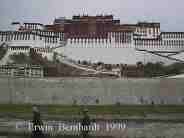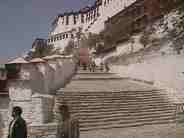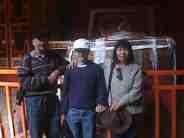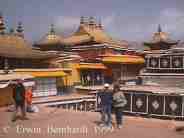Home
Hungary
Cardinal József Mindszenty
1956 Hungarian Revolution (My Story)
(My Eyewitness story of our Freedomfight
and Resistance against the Soviet Invasion)
50th Anniversary of our Freedomfight
My Travel and Photos Pages
Africa
America - North
America - Central
America - South
Asia
Australia
Oceania
My China pages directory
Beijing or Peking
Beijing Buses
Beijing - Forbidden City
Beijing - Prince Gong Palace
Beijing - Summer Palace
Great Wall of China
Guangzhou or Canton
Guangzhou Buses
Guangzhou trains
Hong Kong
Hong Kong Airport
Hong Kong Buses
Hong Kong - Lantau Island
Kashgar or Kashi
Kashgar Buses
Kashgar Sunday Market
Macau
Ming Dynasty Tombs
Peking Man's Caves/Zhoukoudian
Shanghai
Shanghai Buses
Shanghai Maglev / Transrapid
Shanghai Metro
Shenzhen
Shenzhen Buses
Tibet
Tibet - Lhasa
Tibet - Lhasa Monasteries
Tibet - Lhasa - Potala
Turpan or Tulufan
Turpan - Amin Mosque
Turpan - Astana Graves
Turpan - Bezeklik Caves
Turpan - Crescent Moon Lake
Turpan - Dunhuang Caves
Turpan - Echoing-Sand Mountain
Turpan - Ediqut Ruins
Turpan - Emin Minaret
Turpan - Flaming Mountains
Turpan - Gaochang Ruins
Turpan - Grape Valley
Turpan - Green Mosque
Turpan - Jesus Sutras
Turpan - Jiaohe Ruins
Turpan - Karez System
Turpan - Maza Village
Turpan - Mogao Caves
Urumchi or Urumuchi
Xian
Xian Buses
Xian - Hua Qing Pool
Xian - Silk Factory
Xian - Silk Road Monuments
Xian - Terracotta Factory
Xian - Terracotta Army Museum
Yanan
Yanan Buses
Yanan Cave Dwellings
|

China facts & history in brief
 My China pages directory
My China pages directory
Map of China
Potala Palace
Excerpted from Wikipedia, the free encyclopedia
The Potala Palace located in Lhasa, Tibet Autonomous
Region, in People's Republic of China.
The Potala Palace was the chief residence of the Dalai Lama
until the 14th Dalai Lama fled to Dharamsala, India
after a failed uprising in 1959.
Today the Potala Palace has been forcibly
converted into a museum by the Chinese.
It was named after Mount Potala, the abode
of Chenresig or Avalokitesvara.
Thirteen stories of buildings containing over 1,000 rooms,
10,000 shrines and about 200,000 statues, soar 117 metres
(384 ft) on top of Marpo Ri, the "Red Hill", rising more
than 300 m (about 1,000 ft) in total above the valley floor.
It measures 400 metres east-west and 350 metres north-south,
with sloping stone walls averaging 3 m. thick, and 5 m.
(more than 16 ft) thick at the base, and with copper poured
into the foundations to help proof it against earthquakes.
"The Potala gives the impression not of having been built by
man but have grown there, so perfectly does it
fit in with its surroundings.
It has the pleasing lack of symmetry of a great tree or mountain,
yet this apparent aimlessness is focused, first by the red central
block and then by the golden pavilions on the roof, so that the
eye is naturally led from the less important to the essential,
both visually and spiritually; for in so much as the gilded roofs
over the mortal remains of the Dalai Lamas are the dominant
figure of the architecture, so is the incarnate spirit of
these rulers the very soul of Tibet."

For a more information about
Potala Palace see Wikipedia, the free encyclopedia

This page was retrieved and condensed from
(http://en.wikipedia.org/wiki/Potala_Palace)
see Wikipedia, the free encyclopedia, November 2007.
All text is available under the terms of the
GNU Free Documentation License
(see
Copyrights for details).
About Wikipedia
Disclaimers

This information was correct in November 2007. E. & O.E.

I was looking forward to visit the Potala, I was mesmerised with
it the first time I have seen it and read about it.
The more I have read, the more fascinated I became with it.
Iwas anxiously waiting for the time to go up and visit the Potala.
I was also terrified the day before, because I smoke, my age,
the altitude and the height of the Potala, but mainly
because of the warnings.
You will never guess, the next morning the bus taken
us nearly to the top of it, from behind.
We could not see the road up to it, behind the buildings
and I have never seen anything ever mentioning it before
the rear entrance.
I was expecting to climb up all those steps
visible on the front.
Amazing place, amazing sights.
We really enjoyed ourselves.
Superb!!
An unforgettable experience.
We've have had a terrific time!!

P.S. If Lhasa wasn't the epitome of the tourist
must see list, surely the Potala
must be, for me it wass anyway.
King Songtsen Gampo built his palace
in the 7th century on top of the 130 m
'Red Hill' in the centre of Lhasa.
In 1645 work started on the 'White
Palace', (Potrang Karpo) and the 5th
Dalai Lama moved his seat from Dreprung
Monastery there in 1649.
The 5th Dalai Lama died in 1682, but it was kept
a secret until in 1694, the 'Red Place' was completed,
but there are differing stories about that.
The Potala has been a self contained
with cells, schools for monks and tombs of all
Dalai Lamas and the Tibetan Government until
the late 18th century, when
the Summer Palace at Norbulingka was finished.
It was renovated early in the 20th century, and later
suffered some damage during Mao Zetung's Cultural
Revolution in 1959.
The Potala is a massive, awe-inspiring
place to visit.
(From here & there. Author)

Potala Palace 1999
 |
 |
| Potala Palace |
Potala Palace |
 |
 |
| Potala Palace |
Potala Palace |

|